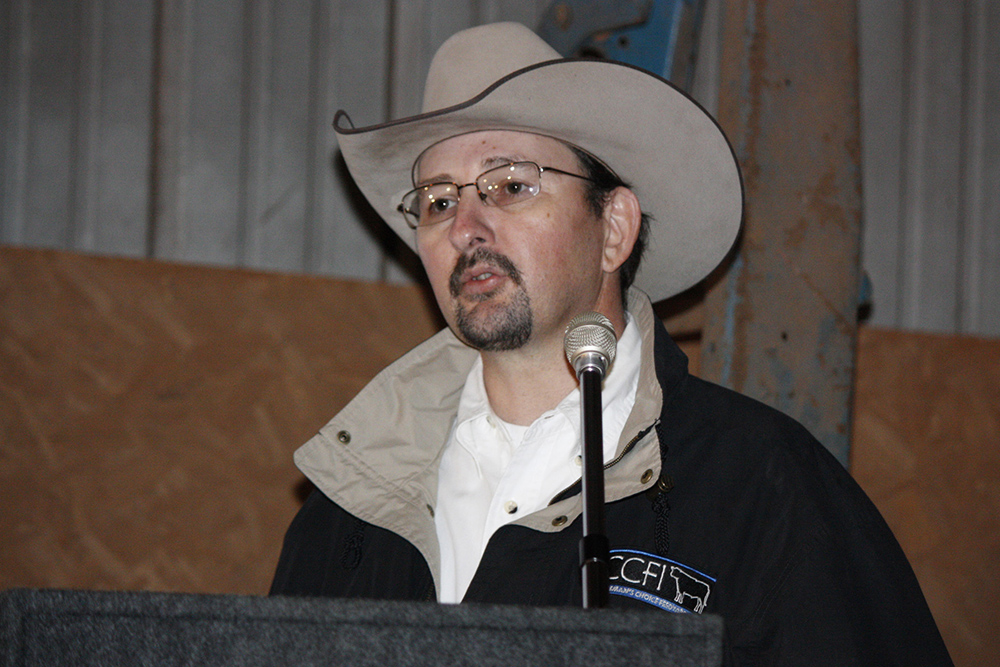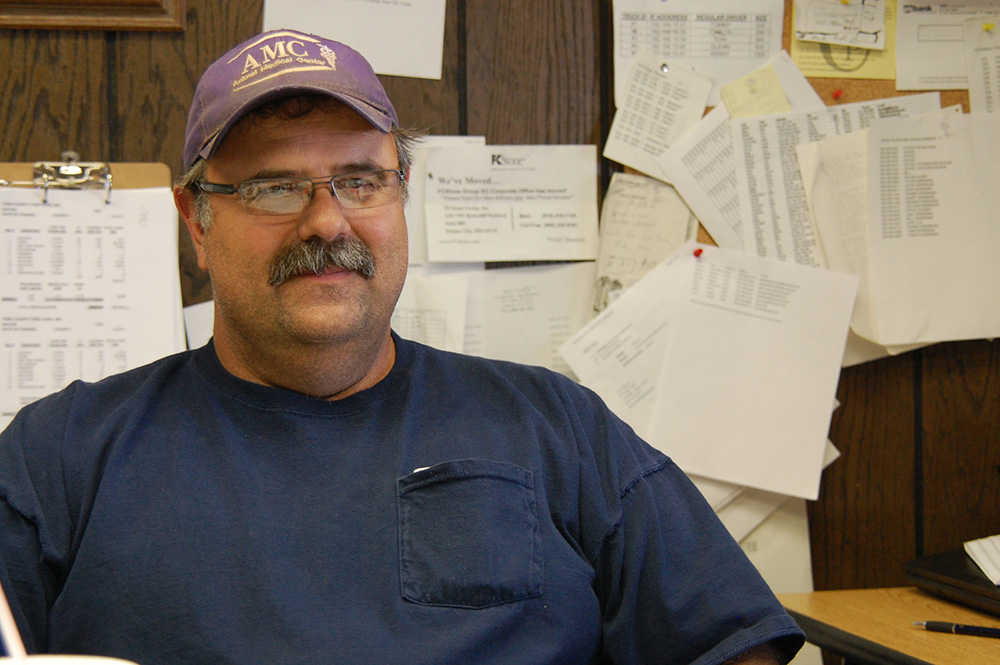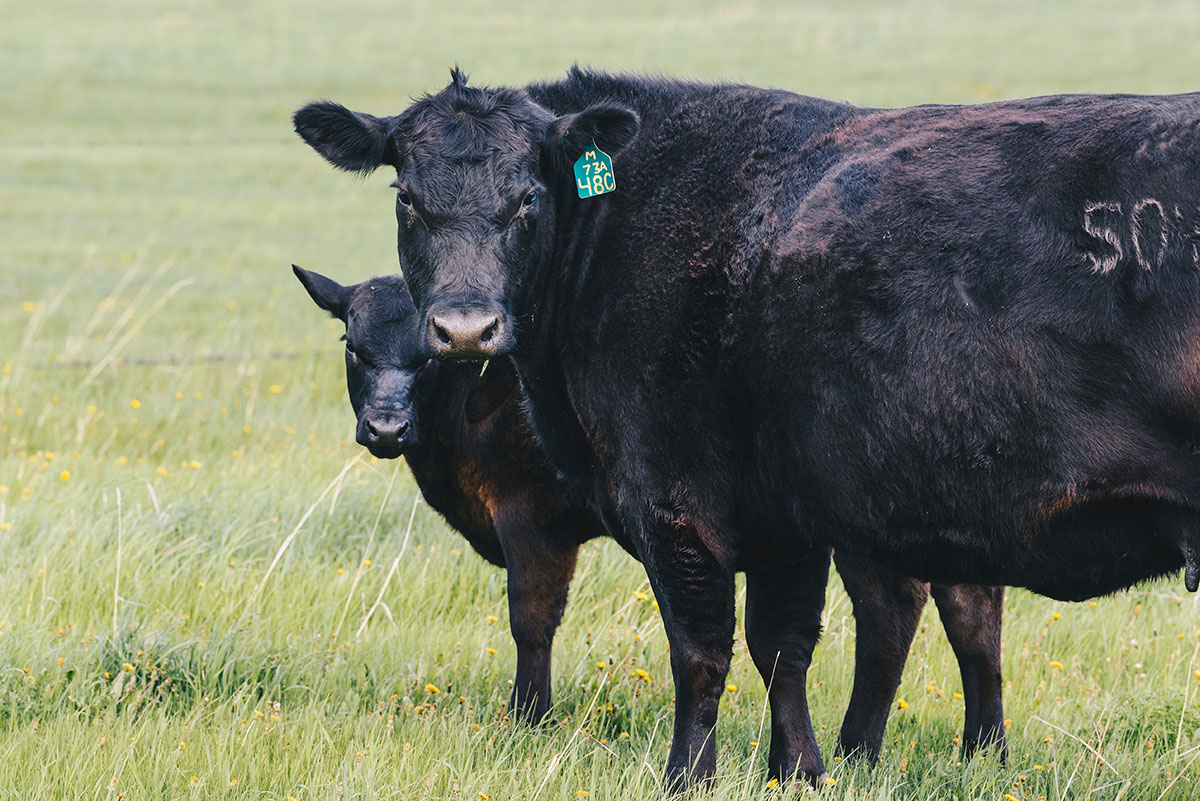
Beyond average for quality, price
Health and history help one feeder surpass standards
by Laura Nelson
In the face of tough feeding margins and negative breakevens, cattlemen should still expect more from their feeders, says one of their own.
“It’s pretty tough margins at most feed yards,” said Dale Moore, owner and manager of Cattleman’s Choice Feedyard. But they all maintain strategies for profit, so before taking a step toward doing business with any feedlot, he suggested, “ask them to share their closeouts.”
Speaking at a recent field day in Chickasha, Okla., Moore reminded cattlemen that whether they retain ownership of cattle on feed or simply supply feeder cattle, everything comes back to the bottom line: “The feed yard and the customer both need to be profitable. It’s just that simple.”
For him, that means finding customers who care about the same cattle qualities, namely health, nutrition, data tracking and relationships. Moore shared performance and harvest data tracked in his Gage, Okla., yard on the value of those factors.
Cattle that never required treatment for health problems there averaged a 19% Certified AngusBeef®(CAB®)brand acceptance rate across all pens regardless of breed makeup. That compared to just 11% in animals that had to be treated twice.
“So in today’s market with a $5-per-hundredweight (cwt.) CAB spread, you lose almost half, and that’s a huge, huge loss of income,” he pointed out. But the more dramatic drop showed up in Choice grading cattle. Between zero and three-times-treated cattle, the share of Choice-grading cattle fell from 73% to 56%, accounting for a $25-$50-per-head decline in profitability.
He saw the same magnitude of effects on performance at the bunk. Healthy cattle gained an average of 568 pounds (lb.) during the feeding period versus 489 lb. on those triple-treated. Average daily gain suffered nearly a 0.75-lb. difference and, and carcass weights varied from 833 lb. to 780 lb. in those respective groups.
“Now, you take that on a $2/lb. carcass and you guys can figure that math pretty quick,” Moore noted.
To keep cattle in the profitably healthy group, he offered one critical piece of advice: “The worst thing you can do to yourself on the cow-calf side is take a calf that’s been weaned 12 to 15 days to a feed yard or sale barn, either one.”
This is one case where it makes the most sense to shoot for all or nothing.

“That time frame can be very detrimental to those cattle. In all the research we’ve done, we’ve found that either 45 days weaned or right off the cow is fine,” he said. “There are some challenges to coming in right off the cow, but you’re just hurting yourself if you try to do something in the middle, and you’re sure not going to build a relationship with whoever buys them.”
It’s not just about a given pen of cattle making money; it’s those relationships that develop overtime that reap the most rewards for both parties in cattle feeding.
“I love it when my customers make money, because then they’re going to continue to come back. They’re going to be happy about making a few changes in their cowherd,” Moore said. Those changes may include updating bull selection criteria or strategic heifer retention, areas where a little feedlot data can greatly inform the decisions.
He shared an example from a steer feedout Cattleman’s Choice hosted. One customer supplied detailed genetic information, including sire groups. The first year in the feedout, that customer’s cattle graded an average of 55% to 58% Choice. They tracked grade barriers back to two sire groups–one that averaged 42% Choice offspring, the other just 36%.
“Now, whether you’re a retained-ownership customer or whether you’re a supplier to a feedyard, if you have a set of cattle that are 55% Choice, you have average cattle, and you’re going to get paid an average price,” Moore said.
That wouldn’t do in his yard, of course, nor for that feedout customer, who removed those two bulls and their progeny. With all other variable constant, the next calf crop averaged 74% Choice and paid premiums more than $100 per head higher than the first year.
“It’s just amazing what a little bit of data tracking will do to increase profitability,” he said. Cattlemen must be able to show their herd’s performance history to potential feeders to cash in on that kind of improvement though.
“History, remember, is not ‘my cattle topped the sale last year.’ That’s not history,” Moore cautioned. “True history comes from feed yard data. If you’re profitable, the feed yard’s profitable, and that builds awfully good relationships.”
Of course, it all leads back to building those relationships in every aspect of a cattleman’s operation, from start to finish. There are a million ways to measure profitability and success in the beef industry, despite those narrow margins and tight breakevens.
“You measure your profits by performance, you measure your profits by quality, you measure profit by dollars—but all of those things come back to improving carcass quality,” Moore said, adding one ultimate goal should exceed all.
“The consumer is where we all need to go back to. Consumers are willing to pay for what they get, and in return they want a tremendous eating experience,” he said. “You’re going to get paid for quality if you continuously produce it.”
You may also like
Drought Impact and Cattle Industry Dynamics
As drought conditions persist across much of cattle country, farmers and ranchers are at a pivotal juncture in the cattle industry’s landscape. What impact does this prolonged dry spell have on the nation’s herd numbers? When will heifer retention begin? How will industry dynamics influence the spring bull sale season?
Nebraska Ranch Receives Certified Angus Beef Commercial Award
Troy Anderson, managing a Nebraska ranch, focuses on breeding thriving maternal cows that will grade premium Choice and Prime, while respecting livestock, people and land. Anderson Cattle receives the 2023 CAB Commitment to Excellence Award. Their journey includes improving genetics, feeding home-raised and purchased calves and using data for better breeding decisions, all with a bottom-line approach.
Magnum Feedyard Earns Certified Angus Beef Award
While Magnum hasn’t always had pens filled with Angus-influenced cattle, they’ve invested in infrastructure, improved quality-based marketing and sought better genetics. Their dedication to detail and employee appreciation drive their success to high-quality beef production.













